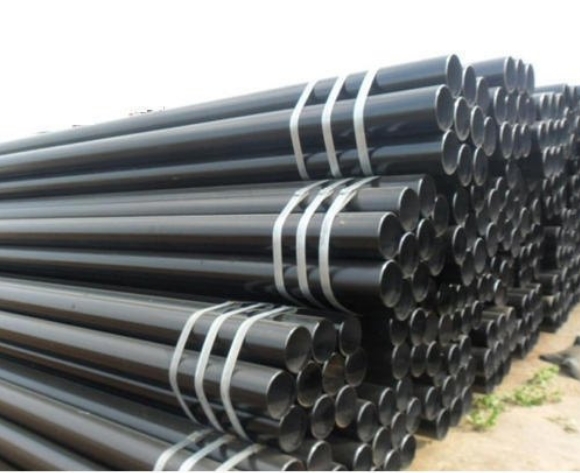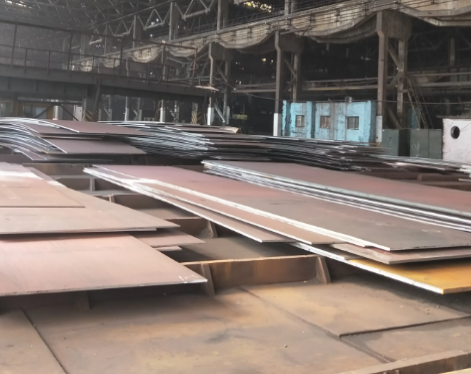Steel pipes made of a single piece of metal with no seams on the surface are called seamless pipes. Seamless pipes are mainly used as petroleum geological drilling pipes, cracking pipes for petrochemical industry, boiler pipes, bearing pipes, and high-precision structural steel pipes for automobiles, tractors, and aviation.
With the development of the national economy, pipelines are used more frequently. In fact, some pipelines transporting oil liquids use seamless pipes, but many pipelines placed underground, how to remove rust? The main method of rust removal for seamless pipes is sand blasting.
Sandblasting and rust removal uses compressed air as power to form a high-speed spray beam to spray the spray material (garnet sand, copper ore sand, quartz sand, emery, iron sand, Hainan sand) at high speed onto the surface of the workpiece that needs to be treated, making the surface of the workpiece A change in the appearance or shape of the outer surface.
Seamless pipe sand blasting and rust removal grade
There are two representative international standards for sandblasting and rust removal grades: one is "SSPC-" formulated by the United States in 1985; the second is "Sa-" formulated by Sweden in 1976, which is divided into four levels They are Sa1, Sa2, Sa2.5 and Sa3 respectively, which are common international standards. The details are as follows:
Sa1 level - equivalent to the US SSPC-SP7 level. Using the generally simple manual brushing and emery cloth polishing methods, this is the lowest level among the four cleanliness levels, and the protection of the coating is only slightly better than that of untreated workpieces. Technical standards for Sa1 level treatment: oil, grease, residual oxide scale, rust spots, residual paint and other contaminants should not be visible on the surface of the workpiece. Sa1 level is also called manual brushing and cleaning level.

Sa2 level - equivalent to the US SSPC-SP6 level. Use sandblasting cleaning method, which is the lowest level in sandblasting treatment, that is, the general requirement, but the protection of the coating is much higher than manual brushing and cleaning. Technical standards for Sa2 level treatment: The surface of the workpiece should be free from visible greasy, dirt, oxide scale, rust scale, paint, oxides, corrosives, and other foreign substances (except defects), but the defects are limited to no more than 100% per square meter of surface 33%, which may include slight shading; a small amount of slight discoloration caused by defects and rust; scale and paint defects. If the original surface of the workpiece is dented, slight rust and paint may remain at the bottom of the dent. Sa2 level is also called commodity cleaning level (or industrial level).
Sa2.5 level - is a level commonly used in industry and can be used as acceptance technical requirements and standards. Sa2.5 level is also called near-white cleaning level (near-white level or white-out level). Technical standards for Sa2.5 level treatment: Same as the first half of Sa2 requirements, but defects are limited to no more than 5% of the surface per square meter, which may include slight shadows; a small amount of slight discoloration caused by defects and rust; scale and paint defects .
Sa3 level is equivalent to the US SSPC-SP5 level. It is the highest treatment level in the industry and is also called white cleaning level (or white level). The technical standards for Sa3 level treatment are the same as Sa2.5 level but 5% of shadows, defects, rust, etc. are not allowed to exist
With the development of the national economy, pipelines are used more frequently. In fact, some pipelines transporting oil liquids use seamless pipes, but many pipelines placed underground, how to remove rust? The main method of rust removal for seamless pipes is sand blasting.
Sandblasting and rust removal uses compressed air as power to form a high-speed spray beam to spray the spray material (garnet sand, copper ore sand, quartz sand, emery, iron sand, Hainan sand) at high speed onto the surface of the workpiece that needs to be treated, making the surface of the workpiece A change in the appearance or shape of the outer surface.
Seamless pipe sand blasting and rust removal grade
There are two representative international standards for sandblasting and rust removal grades: one is "SSPC-" formulated by the United States in 1985; the second is "Sa-" formulated by Sweden in 1976, which is divided into four levels They are Sa1, Sa2, Sa2.5 and Sa3 respectively, which are common international standards. The details are as follows:
Sa1 level - equivalent to the US SSPC-SP7 level. Using the generally simple manual brushing and emery cloth polishing methods, this is the lowest level among the four cleanliness levels, and the protection of the coating is only slightly better than that of untreated workpieces. Technical standards for Sa1 level treatment: oil, grease, residual oxide scale, rust spots, residual paint and other contaminants should not be visible on the surface of the workpiece. Sa1 level is also called manual brushing and cleaning level.

Sa2 level - equivalent to the US SSPC-SP6 level. Use sandblasting cleaning method, which is the lowest level in sandblasting treatment, that is, the general requirement, but the protection of the coating is much higher than manual brushing and cleaning. Technical standards for Sa2 level treatment: The surface of the workpiece should be free from visible greasy, dirt, oxide scale, rust scale, paint, oxides, corrosives, and other foreign substances (except defects), but the defects are limited to no more than 100% per square meter of surface 33%, which may include slight shading; a small amount of slight discoloration caused by defects and rust; scale and paint defects. If the original surface of the workpiece is dented, slight rust and paint may remain at the bottom of the dent. Sa2 level is also called commodity cleaning level (or industrial level).
Sa2.5 level - is a level commonly used in industry and can be used as acceptance technical requirements and standards. Sa2.5 level is also called near-white cleaning level (near-white level or white-out level). Technical standards for Sa2.5 level treatment: Same as the first half of Sa2 requirements, but defects are limited to no more than 5% of the surface per square meter, which may include slight shadows; a small amount of slight discoloration caused by defects and rust; scale and paint defects .
Sa3 level is equivalent to the US SSPC-SP5 level. It is the highest treatment level in the industry and is also called white cleaning level (or white level). The technical standards for Sa3 level treatment are the same as Sa2.5 level but 5% of shadows, defects, rust, etc. are not allowed to exist









